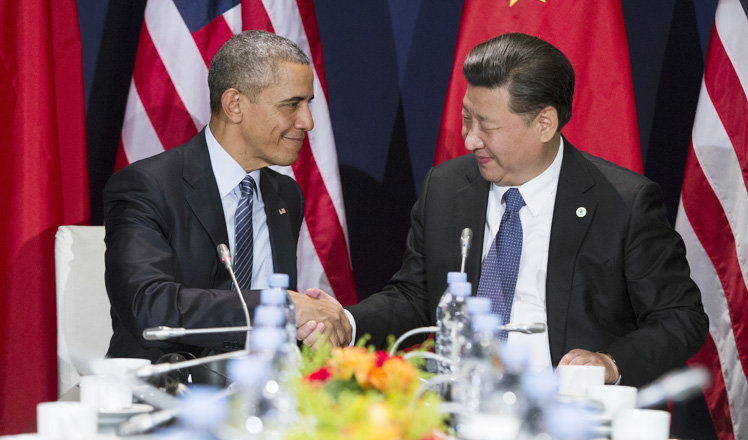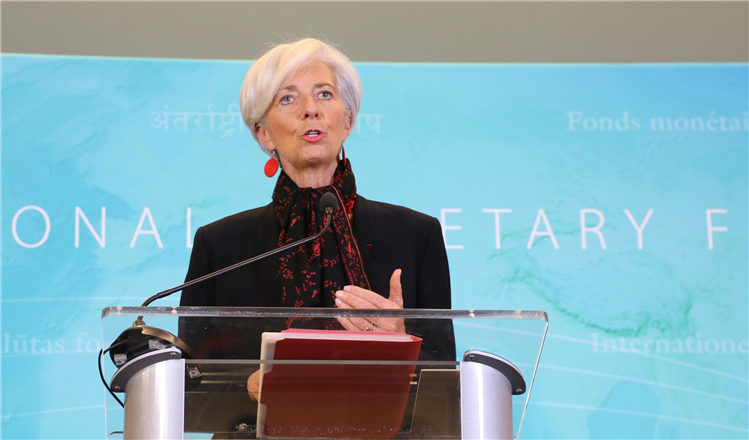Help Latin America weather the winter
Updated: 2015-12-02 15:41
By Lu Daxin(China Daily USA)
|
|||||||||
Weak international demand and low commodity prices have revealed the vulnerability of Latin America's economy. The region's annual growth rate is expected to be only 0.3 percent this year, the lowest among all economic blocs.
The Economic Commission for Latin America and the Caribbean and other international institutions have called for an urgent change in the region's development model away from dependence on the export of natural resources. But some observers say China's economic slowdown is to blame for Latin America's economic woes.
Is it true? Has China stopped buying from Latin America?
The fact is, China, with its growth rate of about 7 percent, is still the biggest contributor to global growth and has shown no sign of declining demand for commodities. According to the Chinese customs, from January to August this year, China's import of grains, copper and its related products, crude oil, and soybean increased by 24 percent, 12 percent, 10 percent and 24 percent.
Despite the fall in prices, which explains the 2.4 percent drop in the total import value, China's total import of commodities is still growing in terms of quantity. The decline in China-Latin America trade is mainly due to low prices in the world market and the depreciation of some Latin American countries' currencies against the US dollar. In fact, during the first nine months of this year, exports from Ecuador, Argentina and Uruguay to China grew by 15 percent, 5.3 percent and 15 percent.
China emphasizes a medium-to-high rate of economic growth, further opening up the economy and expediting urbanization. In the long run, the Chinese economy can still maintain a medium-to-high growth rate and its demand for commodities will remain stable, albeit with a tendency to grow.
But why have commodity prices declined?
Most international institutions believe that the overlapping of weakening global demand and excess production are to blame for the decline. Take iron ore for example. Global buyers, except China, are reducing orders which in turn have lowered demand and prices in the international market. But major producers continue to increase their outputs in order to squeeze out small and medium-sized producers from the market.
On the other hand, the appreciation of the US dollar and geopolitical factors too have led to the drop in international commodity prices; the price of crude oil is a typical case. Besides, expectations of an increase in US interest rates caused capital outflow, and some Latin American countries' currencies depreciated by 15 percent to 30 percent, increasing their financial risks. The Wall Street Journal even said the strong dollar was the final straw on commodity price's back.
So how can Latin America cope with the "winter"?
Along with the above mentioned factors, internal weaknesses like overdependence on exports, imbalance in investments, and consumption and structural problems have also hurt Latin America's economy.
That is why the Economic Commission for Latin America and the Caribbean has advised the region's countries to adopt balanced trade and investment policies, take measures to reduce intraregional trade costs and promote trade integration, reduce dependence on commodities and build a diversified economic structure.
In the medium-to-long term, Latin American countries can still count on their rich natural resources and demographic dividends, and use macro-economic adjustments and structural reforms to overcome their economic difficulties, and hopefully achieve 0.7 percent growth in 2016, and thereafter maintain a modest growth.
Therefore, China and Latin America should upgrade their economic cooperation to provide warmth to each other "during the winter" not only for the benefit of their own development, but also to help boost emerging countries' confidence in strengthening cooperation and boosting global economic recovery.
The author is a Beijing-based researcher in international studies.
(China Daily USA 12/02/2015 page12)
- Britain's Cameron says time to bomb militants in Syria
- Russia accept full suspension from athletics
- Turkish and Russian FMs to meet in Belgrade
- S.Korea, DPRK agree to hold vice ministers' meeting for improved ties
- Avoiding escalation over Russian warplane downing
- Rights panel presses US over scientists' cases

 A deepening friendship
A deepening friendship
 Xi, Obama pledge to manage differences in constructive manner
Xi, Obama pledge to manage differences in constructive manner
 BRICS media leaders gather in Beijing for cooperation
BRICS media leaders gather in Beijing for cooperation
 Restaurateur spreads Chongqing xiaomian all around the world
Restaurateur spreads Chongqing xiaomian all around the world
 Civil service exam: From mock interviews to mirror practice
Civil service exam: From mock interviews to mirror practice
 'Seoul, a city of stream' exhibition impresses visitors in Beijing
'Seoul, a city of stream' exhibition impresses visitors in Beijing
 IMF includes RMB in SDR basket
IMF includes RMB in SDR basket
 Exquisite gold and jade products go on display in Beijing
Exquisite gold and jade products go on display in Beijing
Most Viewed
Editor's Picks

|

|

|

|

|

|
Today's Top News
Chinese bargain hunters are changing the retail game
Chinese president arrives in Turkey for G20 summit
Islamic State claims responsibility for Paris attacks
Obama, Netanyahu at White House seek to mend US-Israel ties
China, not Canada, is top US trade partner
Tu first Chinese to win Nobel Prize in Medicine
Huntsman says Sino-US relationship needs common goals
Xi pledges $2 billion to help developing countries
US Weekly

|

|








